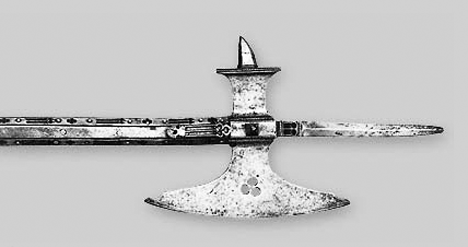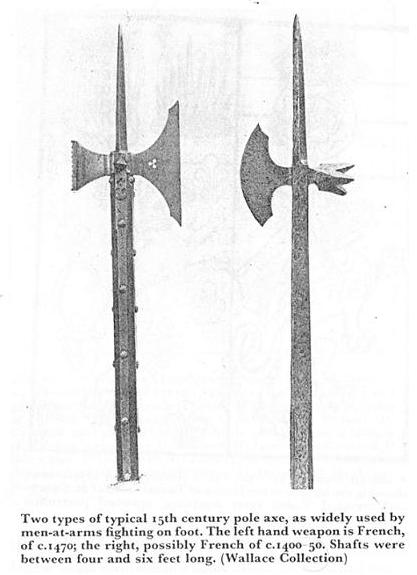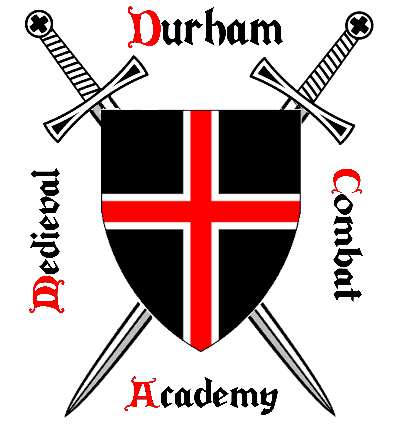This is the list of weapons that will initially be covered by the Durham Medieval Combat Academy: longsword, one-handed sword and poleaxe
Two really nice web sites about medieval weapons and armour can be found at www.MedievalWarfare.Info and MyArmoury.com.

The term Longsword is a modern term for a sword that was primarily used two handed but was light enough to be gripped in one hand for some techniques. For more information on longswords, check their Wikipedia entry.
Swords have received a lot of attention from historians and warfare archaeologists. The most prominent one is Ewart Oakeshott who has created a classification of blades, crosses and pommels found in swords called the Oakeshott Typology. Regarding longswords, this typology includes the following blade types:
-
Type XIIa

-
Type XIII

-
Type XIIIa

-
Type XVa

-
Type XVII

-
Type XVIIIa

-
Type XVIIIb

-
Type XVIIIc

-
Type XVIIId

-
Type XX

-
Type XXa

More info on the typology can be found there:
The following are links to a database of museum pieces:
On closer inspection, it can be seen that some longswords have
a very shallow profile taper and finish in a wider point (e.g. Type
XIIa, XIII and XIIIa). Other types have a very pronounced profile
taper and the blade terminates in a very acute point (e.g. Type
XVa, XVIIIb, XVIIId).
Longswords with a wider point are not perfect for thrusting, especially
if the opponent wears any piece of armour, even a padded arming
jacket would probably provide suitable protection against a thrust
from these blade types. These swords are better designed for cutting
but their efficiency against the simplest metal armour such as a
maille hauberk is severely limited. Improvement in armour design
made it necessary to develop swords that could pierce through armour,
for example through rings of maille hauberks or through gaps in
plate armour. Improvement in blade metallurgy made it possible to
develop blades with acute but strong points. Swords of type XVa,
XVIIIb and XVIIId are later designs aiming to improve thrusting
ability and defeat armour.
Indeed, thrusting with a longsword is a key technique in
treatises. It means that
for the purpose of HEMA, longswords inspired by the types XVa, XVIII
are more suited. They are based on blunt edges and rounded points
but their profile taper is representative of these sword types.
For more thoughts on HEMA techniques, see here.
Several interesting analyses of longswords can be found there:
One-handed swords reveived the same level of attention as longswords from E. Oakeshott and we refer to that section for links on the typology.
-
Type X

-
Type Xa

-
Type XI

-
Type XIa

-
Type XII

-
Type XIII

-
Type XIIIb

-
Type XIV

-
Type XV

-
Type XVI

-
Type XVIII

-
Type XVIIIa

-
Type XXI

-
Type XXII

To address a gap in sword classification (8th to 11th century), Alfred Geibig has also generated a classification that can be found on MyArmoury.com.
This is the Oakeshott analysis of one of David Tétard's one-handed swords, used for re-enactment with Dawn of Chivalry (13th century) but that can also be used in HEMA (sword and buckler): here.


More info on poleaxes can be found there:

